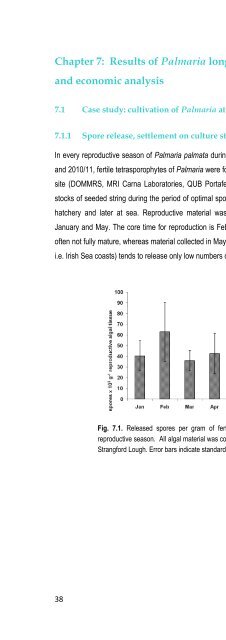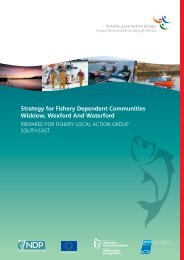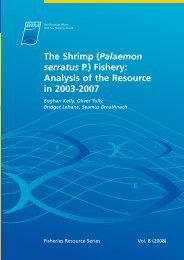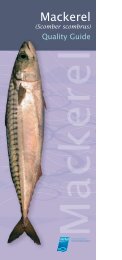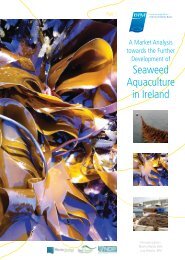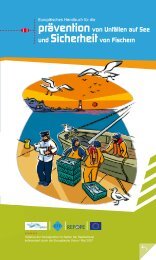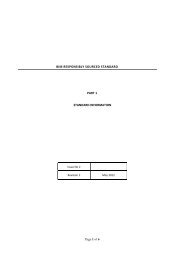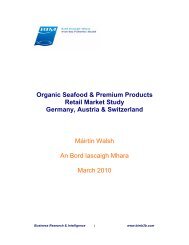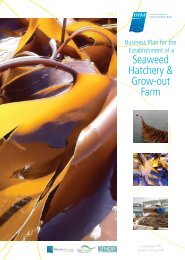Cultivating Palmaria palmata - Bord Iascaigh Mhara
Cultivating Palmaria palmata - Bord Iascaigh Mhara
Cultivating Palmaria palmata - Bord Iascaigh Mhara
Create successful ePaper yourself
Turn your PDF publications into a flip-book with our unique Google optimized e-Paper software.
Chapter 7: Results of <strong>Palmaria</strong> longline cultivation trials 2009/2011<br />
and economic analysis<br />
7.1 Case study: cultivation of <strong>Palmaria</strong> at four Irish sites: Summary of results<br />
7.1.1 Spore release, settlement on culture string and ongrowth of sporelings<br />
In every reproductive season of <strong>Palmaria</strong> <strong>palmata</strong> during the course of the project, i.e. winter 2008/09, 2009/10<br />
and 2010/11, fertile tetrasporophytes of <strong>Palmaria</strong> were found in abundance for sporulation trials at each hatchery<br />
site (DOMMRS, MRI Carna Laboratories, QUB Portaferry). These trials were carried out in order to build up<br />
stocks of seeded string during the period of optimal spore production, and to test the ongrowing potential in the<br />
hatchery and later at sea. Reproductive material was collected fortnightly during low spring tides between<br />
January and May. The core time for reproduction is February to April. Fertile material found before February is<br />
often not fully mature, whereas material collected in May (this is only possible on the colder east coast of Ireland,<br />
i.e. Irish Sea coasts) tends to release only low numbers of spores with low viability (Fig. 7.1).<br />
38<br />
Fig. 7.1. Released spores per gram of fertile <strong>Palmaria</strong> fronds during the<br />
reproductive season. All algal material was collected during low spring tides in<br />
Strangford Lough. Error bars indicate standard deviations.


